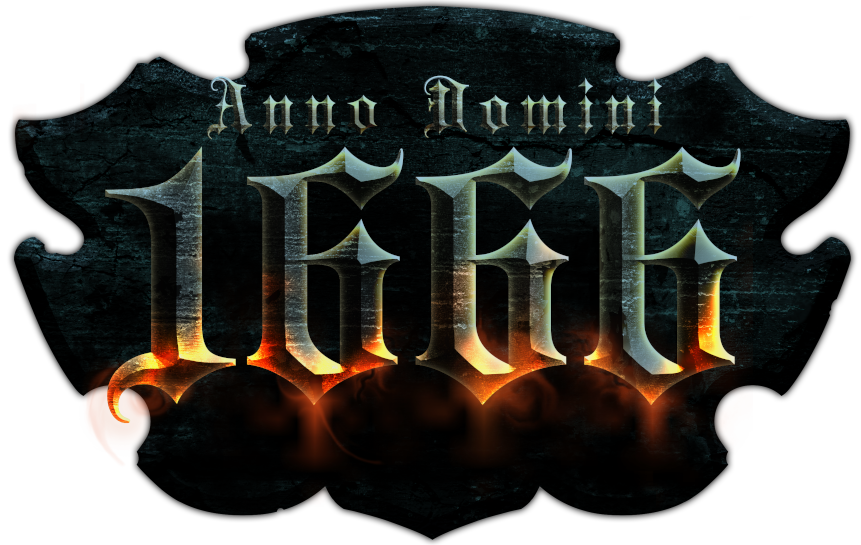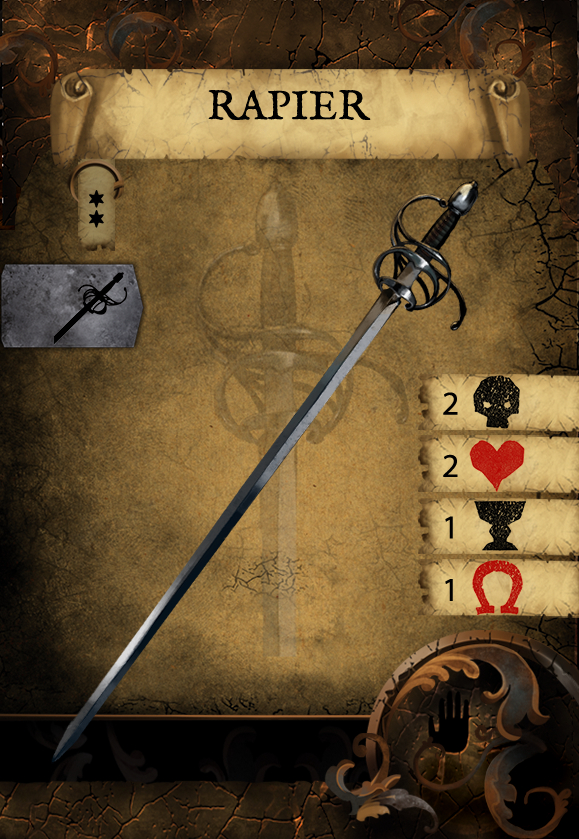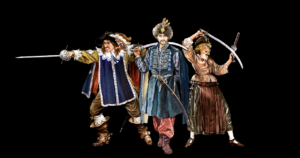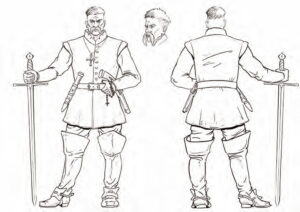Fighting with two weapons is incredibly spectacular and equally ineffective. Hollywood popularized it, drawing inspiration from Eastern martial arts. But how does it work in Anno Domini 1666?
As we mentioned in the previous section, among the creators of Anno Domini 1666, HEMA (Historical European Martial Arts) is a popular hobby. Consequently, great emphasis was placed on faithfully representing the realities of weapon combat, though ensuring the game remains enjoyable has always been the top priority. This also applies to fighting with two weapons.
Erroneous Assumptions in Most Games
In most board games or RPGs, a common error is repeated. This stems from thinking in terms of turns/rounds and a seemingly logical assumption that, in reality, has little to do with actual combat dynamics. In games, combat is divided into turns, where opponents alternate attacks. Real-life combat, however, doesn’t follow such structured rules. Yet, to some extent, this does reflect the nature of fencing or combat, where the flow of action often alternates naturally. When attacked (i.e., the opponent has initiative), we must defend ourselves to avoid being hit. Only after creating an advantageous situation can we counterattack. In sabre duels, for example, this often happens immediately after parrying or evading an attack.
The above portrayal of fencing is, of course, a significant simplification, necessary for the purpose of this entry. Here, we arrive at the conclusion that the turn-based attack mechanic in most games is fairly logical. Unfortunately, this leads to a less logical consequence: the idea of having a statistic that determines the number of attacks, which doesn’t align with real combat.
Another issue arises from the assumption that if someone wields a second weapon, they can use it to perform an additional attack, thereby increasing the total number of attacks. This creates a disconnect from the realities of combat mechanics and reinforces a game mechanic that prioritizes numerical balance over authenticity.
How would this work in a real fight? If I have a sword in one hand and an axe in the other, am I supposed to swing them alternately? Or perhaps strike simultaneously? It’s hard to imagine an opponent patiently waiting while I attack them first with an axe and then with a sword in turn.
In actual combat, the number of weapons held doesn’t translate to the number of “attacks” that can be made. Instead, one weapon could be used to block the opponent’s strike or to mislead them. This, however, would still constitute a single sequence, which can be countered, for example, by increasing the distance between the combatants. Combat revolves around fluidity and strategy, not a simplistic tally of offensive moves per weapon.
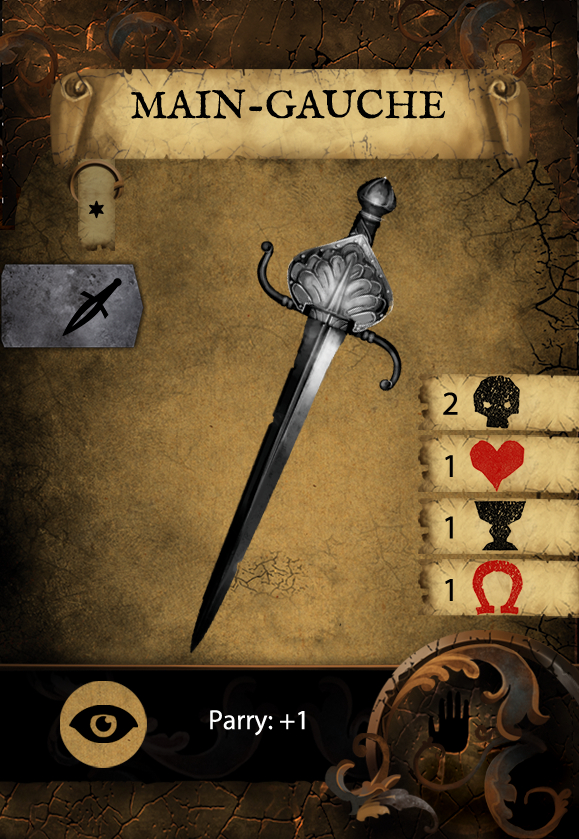
Does this mean using two weapons gives us no advantage? Not exactly. As we mentioned earlier, there are certain benefits. For instance, one weapon can be used to parry or temporarily block an opponent’s strike while simultaneously attacking with the other. However, the most effective choice for this purpose isn’t necessarily a second saber, rapier, or axe, but rather a weapon designed specifically as a secondary tool for combat.
Melee in Anno Domini 1666
In Anno Domini 1666, we moved away from alternating attacks during combat. Instead, players take turns playing cards, creating the sensation of fencing. Ultimately, the final combat score determines the outcome. After this, there’s an option to parry, and if the test succeeds, the exchange of blows continues (represented by further card play). This approach completely eliminates the issue of managing a “number of attacks” mechanic.
The second weapon, on its own, provides the advantage of deciding which one to use in a given situation. For example, if we sense that our advantage is significant, we might opt for a less maneuverable weapon that deals higher damage.
The situation becomes even more favorable if the character has the “Ambidexterity” skill. This skill signifies that the character is trained to effectively use an item held in their off-hand—a feat not easily mastered without proper training. This grants a +1 bonus to the Combat Total, but only if the starting cards of both players are of the same colour.
The best result, however, is achieved when we take an item specially designed for this purpose in our second hand, such as a main-gauche. As befits this type of weapon, it deals low damage and is short (so it has low “Superiority,” which we discussed extensively in the previous post), but it has the “Parry” ability, which makes it easier for us to pass the parry test. This is not only historically accurate but also very useful. Not only can we defend ourselves in a losing situation, but we can also tactically provoke the opponent to discard cards. Additionally, if we consider that many weapons have certain drawbacks for fighting after a parring (e.g., the “Unwieldy” trait), it turns out that the benefit of having a second weapon can be significant.
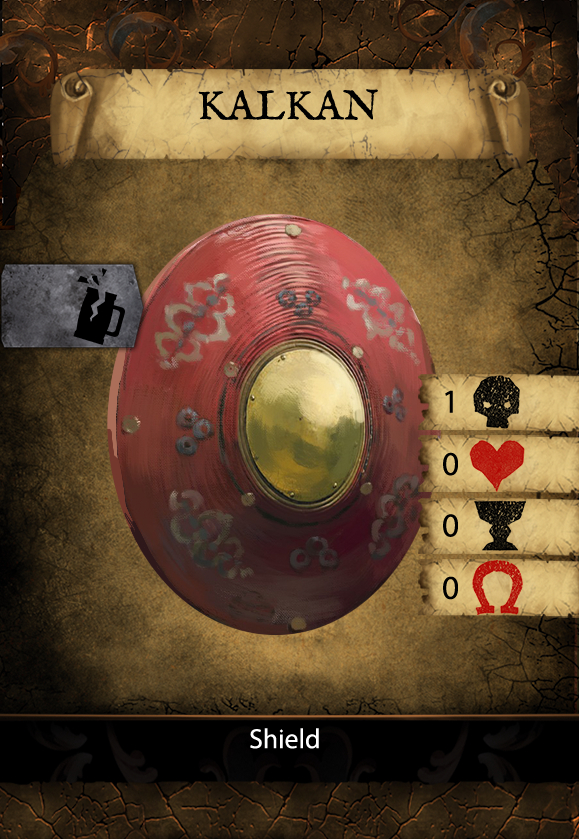
But isn’t it better, like most of our ancestors in similar situations, to reach for a shield? The additional fencing marker is truly a great bonus, but we leave the decision up to you!
